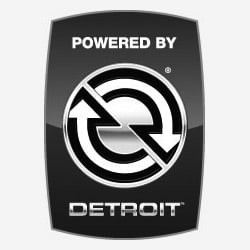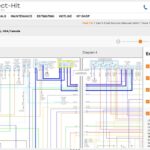The Diesel Particulate Filter (DPF) dash light is a crucial indicator of your vehicle’s emissions system health. Ignoring this light can lead to costly repairs and reduced engine performance. This guide will provide a comprehensive understanding of the Dpf Dash Light, its different warnings, and the necessary actions to take.
 Dpf lights | what to look for when they come on detroit diesel
Dpf lights | what to look for when they come on detroit diesel
Modern diesel engines utilize a DPF to trap harmful soot particles from the exhaust. This filter requires periodic cleaning, known as regeneration, to maintain optimal performance. The DPF dash light communicates the status of the filter and alerts you when regeneration is required.
DPF Light: Steady Illumination
A steadily illuminated DPF light signifies the initial warning stage. This indicates that the filter is accumulating soot and approaching the need for regeneration. You likely have several hours of driving time before performance is affected. At this stage, a passive or automatic regeneration can often occur.
Passive regeneration happens automatically during highway driving at sustained speeds. Increased exhaust temperatures, triggered by engine sensors, burn off the accumulated soot. Some trucks utilize an oxidizing catalytic converter to achieve the same result.
DPF Light: Flashing Warning
A flashing DPF light signals a more urgent situation. This indicates that a parked regeneration is immediately necessary. Ignoring this warning can lead to further complications. If the Check Engine light illuminates alongside the flashing DPF light, immediate action is paramount. A beeping sound may also accompany these warnings.
Parked Regeneration Procedure:
- Safe Location: Park the vehicle in a safe location away from flammable materials, ensuring adequate clearance.
- Warning Signage: Display a warning sign indicating “Caution – Parked – DPF Regeneration in Progress.”
- Vehicle Preparation: Place the transmission in neutral and engage the parking brake. Release and re-apply the parking brake, then depress and release the clutch pedal (if equipped).
- Initiate Regeneration: Locate and press the designated “REGEN” button on the dashboard, holding it for the specified duration.
The regeneration process typically takes 20-40 minutes. Engine RPM will increase during this process but will return to normal upon completion. The High Exhaust System Temperature (HEST) light may also illuminate, indicating the elevated temperatures required for regeneration. This light will extinguish once the process is complete.
Stop Engine Light: Critical Warning
Failure to perform the required regeneration will eventually lead to a clogged DPF, severely impacting engine performance and potentially causing damage. The Stop Engine light indicates a critical situation. If this light illuminates, immediately shut down the engine and seek roadside assistance.
Consult your vehicle’s owner’s manual or sun visor decal for detailed instructions on parked regeneration procedures.
DPF Maintenance and Cleaning
While the DPF is designed for durability, it eventually requires manual cleaning. Adhering to the manufacturer’s recommended regeneration procedures will extend the filter’s lifespan. The average lifespan of a DPF ranges from 300,000 miles for older trucks to 400,000 miles for newer models.
Understanding the DPF dash light and its various warnings is crucial for maintaining your vehicle’s health and performance. Promptly addressing these warnings will prevent costly repairs and ensure optimal engine operation.
